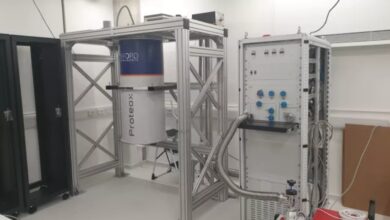Virginia’s Fusion Power Plant: A Giant Leap Towards Infinite Energy

Groundbreaking announcement, Commonwealth Fusion Systems (CFS), a Massachusetts-based company, has chosen Chesterfield County, Virginia, as the site for the world’s first grid-scale commercial fusion power plant. Named ARC, this initiative promises to mark a significant milestone in the quest for clean, virtually limitless energy, with the plant expected to begin operations in the early 2030s.
The plant is set to produce approximately 400 megawatts of electricity, enough to power around 150,000 homes, offering a clean alternative to fossil fuels. Fusion energy, often referred to as the ‘holy grail’ of energy production because it mimics the process powering the stars, involves combining hydrogen atoms to create helium, releasing vast amounts of energy without the harmful byproducts associated with nuclear fission.
Governor Glenn Youngkin celebrated the news, stating this as “an historic moment for Virginia and the world at large.” The facility will be built at the James River Industrial Park, on land currently owned by Dominion Energy Virginia, which will collaborate with CFS on non-financial aspects like development and technical expertise. This partnership underscores Virginia’s growing commitment to clean energy innovation, with the state offering financial incentives including $1 million from the Virginia Energy Clean Energy Innovation Bank and $1 million from Chesterfield County, alongside a sales and use tax exemption for the plant’s equipment.
CFS has been at the forefront of fusion energy development, having already made strides with its SPARC project in Massachusetts, which is expected to produce net energy by 2027. SPARC will serve as a smaller-scale test version, paving the way for the larger ARC reactor. The company’s approach involves using high-temperature superconducting magnets to confine plasma, a critical component for achieving the conditions necessary for fusion.
The economic impact of the ARC plant is anticipated to be substantial, with billions of dollars in economic development and the creation of hundreds of jobs during construction and operation. This project not only positions Virginia as a leader in clean energy but also aligns with global efforts to address climate change by providing a sustainable power source that does not emit greenhouse gases.
However, despite the excitement, there remains a cautious optimism. The path to commercial fusion has been fraught with challenges, including the immense technical difficulties of maintaining the stability of fusion reactions and the conversion of the energy produced into usable electricity. Critics and experts alike have noted the historical tendency of fusion projects to be delayed or face unforeseen technical hurdles.
Still, if successful, ARC could herald a new era in energy production, potentially changing how the world generates and uses power. It would represent not just a step but a leap towards infinite, clean energy, offering hope for a future where energy supply is no longer a constraint to human progress or environmental sustainability.
For now, all eyes will indeed be on Virginia as it potentially becomes the birthplace of commercial fusion energy, with the broader implications for global energy policy, economic development, and environmental conservation hanging in the balance.




